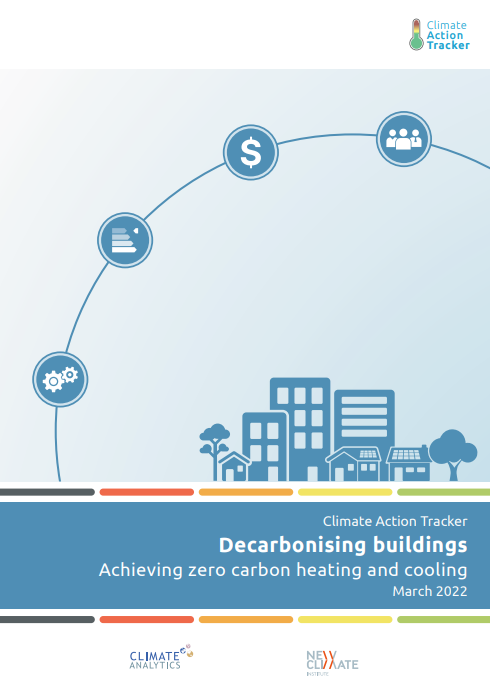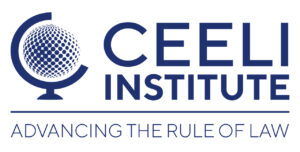Offers a comprehensive overview of the measures governments can implement to decarbonize the building sector, focusing on achieving zero carbon in heating and cooling. It particularly underscores the necessity of addressing building emissions, contributing to approximately one-fifth of global emissions. Despite the urgent need for action, progress in the building sector has unfortunately been slow. Notably, the report details the relevant technologies, performance standards, costs, finance options, and strategies to involve various stakeholders in the sector.
Furthermore, the report emphasizes that several technologically advanced and commercially viable options for decarbonizing heating and cooling already exist. These options include energy-efficient building envelopes, heat pumps, and on-site renewables. In addition, the report also stresses the need for solutions customized to national and local conditions, the crucial role of financing, and the involvement of all pertinent actors.
Key challenges
Decarbonizing the building sector poses many challenges due to its diversity and complexity. A significant challenge is the wide range of building types, sizes, and uses across different climate zones, necessitating tailored decarbonization strategies. Additionally, the building sector involves many stakeholders, including landlords, tenants, financial institutions, and policymakers. This makes coordination and engagement a crucial factor for successful decarbonization.
Engaging with various actors and stakeholders in the sector is essential to successfully address the diversity and complexity of buildings in decarbonization efforts. Governments, in particular, can play a crucial role in incentivizing and compelling these actors through legislation, providing access to financing options and designing financial incentives to drive investments towards sustainable solutions. Consequently, novel approaches to engaging stakeholders and fostering cooperation are vital for accelerating decarbonization efforts.
Various technologies are available for achieving zero-carbon heating and cooling in buildings. Some of the critical technologies include heat pumps, district heating or cooling systems, energy efficiency measures, solar thermal heating for hot water, and renewable energy sources like hydrogen and biomass. However, the choice of technology depends on factors such as climatic conditions, building purpose, and existing infrastructure, highlighting the need for tailored approaches at the national and local levels. Heat pumps are often preferred, but district heating or cooling systems may be more suitable for densely populated areas. Conversely, solar thermal heating can be widely implemented for hot water needs.
Overview
Introduction
Provides an overview of the importance of heating and cooling in the building sector. Following this, it emphasizes the need to reduce emissions per the Paris Agreement and acknowledges the challenges in decarbonizing buildings. Furthermore, it outlines the objectives of the analysis, compares the building sector to other sectors in terms of emissions, and explains the approach taken in the report.
It emphasizes the significance of heating and cooling systems in buildings and underscores the urgency of reducing emissions to align with climate goals. In addition, it acknowledges the complexity of decarbonizing the building sector. To set the stage for the subsequent analysis, it outlines the key questions to be addressed, the methodology employed, and the case studies examined throughout the report.
Element One — Technologies
Focuses on the technological solutions available for decarbonizing the buildings sector. It highlights that the main challenge in transforming the building sector is not necessarily the lack of technical options but rather the uptake and implementation of these technologies. It spotlights various mature and low-carbon heating and cooling options, including heat pumps, district heating or cooling systems, and energy efficiency measures.
In the course of the analysis, it underscores the importance of tailoring technological strategies to local conditions, building purposes, and existing infrastructure. It mentions, for instance, that heat pumps are often a preferred option for thermal energy supply, while district heating or cooling systems are particularly effective in densely populated areas. Moreover, it also discusses the role of renewable hydrogen, smart controls, and on-site renewables in achieving zero-carbo heating and cooling in buildings.
Illustratively, case studies from Sweden and the United Kingdom provide examples of successful and unsuccessful implementations of technological solutions in the building sector. It emphasizes the need for technological advancements, regulatory support, financial incentives, and stakeholder engagement to accelerate the adoption of zero-carbon technologies and energy efficiency measures in buildings.
Element Two — Minimum Energy Performance Standards
Focuses on the pivotal role of minimum energy performance standards (MEPS) as a driver for energy efficiency and emissions reduction in the buildings sector. It’s important to note that MEPS are identified as fundamental policy instruments for reducing energy demand and emissions in buildings.
Interestingly, the analysis highlights that while one-third of nations have some form of energy efficiency requirements in building codes, many still lack stringent regulations for existing buildings and enforcement mechanisms. This lack of enforcement of existing codes significantly limits their effectiveness in ensuring compliance with international agreements such as the Paris Agreement.
Moreover, it underscores that MEPS have the power to regulate the energy-related requirements of building components, technologies, or entire buildings and are crucial for increasing the frequency and depth of energy retrofits. Last but not least, the International Energy Agency (IEA) recommends that building codes mandating the construction of zero-carbon buildings be in place in all countries by 2030 at the latest.
Element Three – Financing
Concentrates on the role of financing in driving the transition towards zero-carbon heating and cooling in buildings. The analysis notably highlights that while some zero-carbon buildings may be cheaper than their high-carbon counterparts over the lifetime of the building, many investors face high upfront costs and long payback periods, which can limit the uptake of low-carbon investments.
Emphasizing a key point suggests that alternative financial support arrangements are required to change the market by improving the cost-competitiveness of low-carbon investments, addressing high upfront costs, and reducing financial risks. Multiple policy instruments are available, including grants, subsidized loans, loan guarantees, and performance-based debt relief, and the most appropriate depends on the regulatory framework and financial situation of the country or region.
It also highlights the importance of carbon pricing in reducing building sector emissions. Still, it emphasizes the need to ensure that any carbon pricing scheme is revenue-neutral and does not exacerbate social inequalities. To illustrate this point, case studies from Germany and the Netherlands demonstrate successful financial support schemes for incentivizing the construction of and retrofitting zero-carbon buildings.
Element Four — A multitude of actors
Centers on the diverse stakeholders involved in decarbonizing the building sector while emphasizing the importance of engaging these actors to achieve zero-carbon heating and cooling. The analysis notably highlights that the buildings sector involves a complex network of stakeholders, including architects, builders, property managers, homeowners, contractors, landlords, and tenants, each playing a crucial role in shaping building design and development.
Firstly, it underscores the need to shift existing practices, customs, and interests towards enabling actors to plan, develop, and build zero-carbon buildings. It then discusses the challenges in engaging various stakeholders and the importance of incentivizing and supporting them to work towards zero carbon options.
To illustrate this, case studies from Australia, the EU, Germany, and the Netherlands provide examples of successful engagement strategies with different actors in the building sector. Finally, it also stresses the role of green banks, energy service companies, and one-stop shops in facilitating the transition towards zero-carbon buildings by providing financial incentives, technical support, and access to information.
What would it take to transform the buildings sector?
Delves into the necessary actions and strategies to transform the sector towards zero carbon heating and cooling. Notably, it emphasizes the urgency of addressing building emissions, which account for a significant portion of global greenhouse gas emissions.
The analysis significantly underscores the need for global greenhouse emissions to halve by 2030 and reach net zero by 2050 to meet the 1.5°C temperature limit of the Paris Agreement. The report outlines sector-specific benchmarks for the buildings sector to align with these global targets, emphasizing the importance of rapid and comprehensive decarbonization efforts.
Furthermore, the section discusses the challenges posed by the diversity and complexity of buildings, which vary across different types, sizes, and climate zones. It highlights that while the technologies required for decarbonizing the buildings sector are mature and available, widespread adoption remains challenging due to barriers such as high upfront costs and lack of incentives.
Lastly, the report underlines the importance of tailored approaches, supportive policies, financial mechanisms, and stakeholder engagement to drive the transformation of the buildings sector. It concludes by calling for regulatory frameworks, financial incentives, and collaborative efforts to accelerate the uptake of zero-carbon technologies and energy efficiency measures in buildings.




